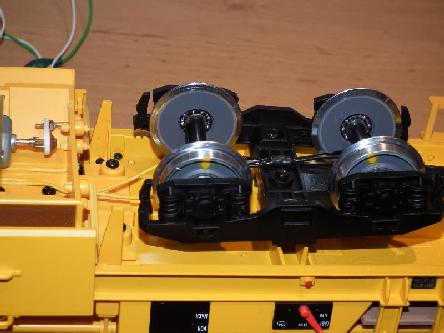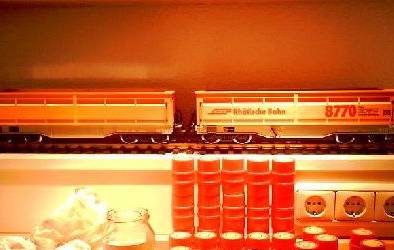
#1
The tracks which are necessary to release these cars' mechanism are also driven by the controller boards which makes it possible to move the unloading traps slowly - just like the prototype. This stood to reason for turning the 'LGB automatic' cars into RhB Fau cars. The original lettering was removed by applying a thin film of brake fluid which was wiped away after 10 minutes of action with a cloth, also soaked with brake fluid. After that, a new lettering set from Harald Krafthoefer was applied.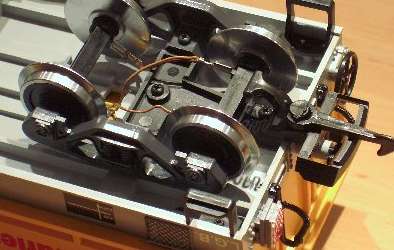
#2
The RhB tail-light shown at the bottom of this picture also was obtained from Harald Krafthoefer. It is a kit consisting of plastic parts - which need to be glued to each other in layers - and a flashing LED. Compared to the corresponding product by Dietz, it is a bit larger and opposing to the Dietz product it needs to be painted. Advantage: Its price is substantially more attractive. The LED's pins are plugged into two bores which have been applied to the vehicle body with a 1mm drill. The tail-light and its LED's pins are glued to the body using a glue based upon methacrylate (f.i. "Stabilit Express").
The RhB tail-light shown at the bottom of this picture also was obtained from Harald Krafthoefer. It is a kit consisting of plastic parts - which need to be glued to each other in layers - and a flashing LED. Compared to the corresponding product by Dietz, it is a bit larger and opposing to the Dietz product it needs to be painted. Advantage: Its price is substantially more attractive. The LED's pins are plugged into two bores which have been applied to the vehicle body with a 1mm drill. The tail-light and its LED's pins are glued to the body using a glue based upon methacrylate (f.i. "Stabilit Express").
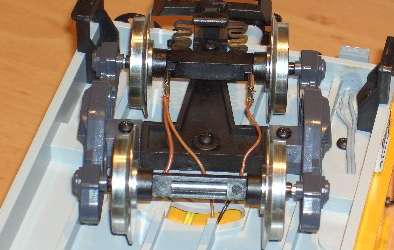
#3
A prototype-like movement of the unloading traps only can be achieved with a relative low voltage, which cannot be supplied reliably to the motor with the original collectors. The known ball bearing wheels are a remedy, in addition they supply power to the car's tail-light.
A prototype-like movement of the unloading traps only can be achieved with a relative low voltage, which cannot be supplied reliably to the motor with the original collectors. The known ball bearing wheels are a remedy, in addition they supply power to the car's tail-light.
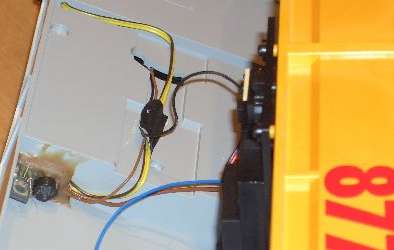
#4
A slightly modified version of the 5V-supply (a 700Ohm resistor was added to the line between the transistor and the LED) is used to power the tail-light. The "dwarf board" is placed inside the cavity beneath the unloading trap's drive.
The above tuning and a suitably programmed controller provide that a gravel load can be dumped quite realistically now.
A slightly modified version of the 5V-supply (a 700Ohm resistor was added to the line between the transistor and the LED) is used to power the tail-light. The "dwarf board" is placed inside the cavity beneath the unloading trap's drive.
The above tuning and a suitably programmed controller provide that a gravel load can be dumped quite realistically now.
Once more: Unloading gravel...
The discharging flaps of a LGB RhB Fad gravel hopper were equiped with a motor drive:For some strange reason...
two old slotcar motors from the box of remainders reminded me of a modification a friend had applied to one of his hoppers. He used a servo to activate the flaps.
After a brief electrical check of the motors it turned out that one could make use of them in conjunction with some mechanical gear to activate the flaps using the analogue LGB activation track 10154.
The video on the left shows the first functional test of the motorized discharging flaps.
The following pictures show the drive's development:
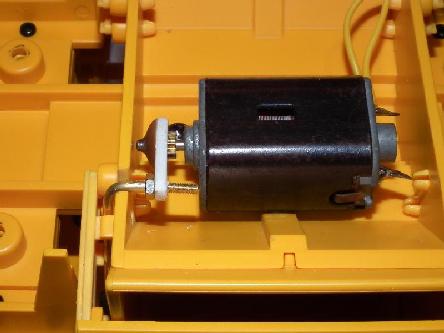
One of the motors mounted beneath the car's discharging device.
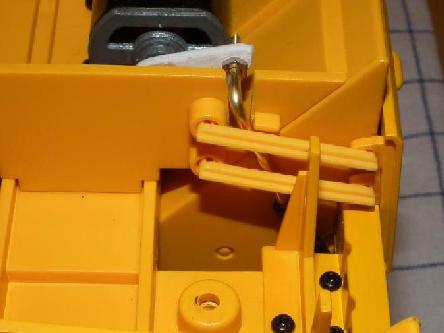
One of the discharging flaps' mechanical gear.
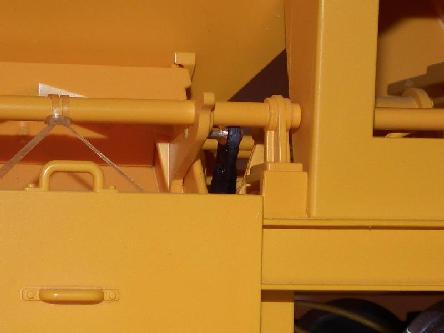
One of the activators between the original mechanical tangle.

